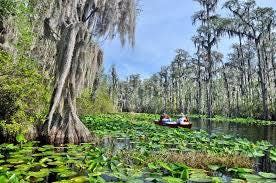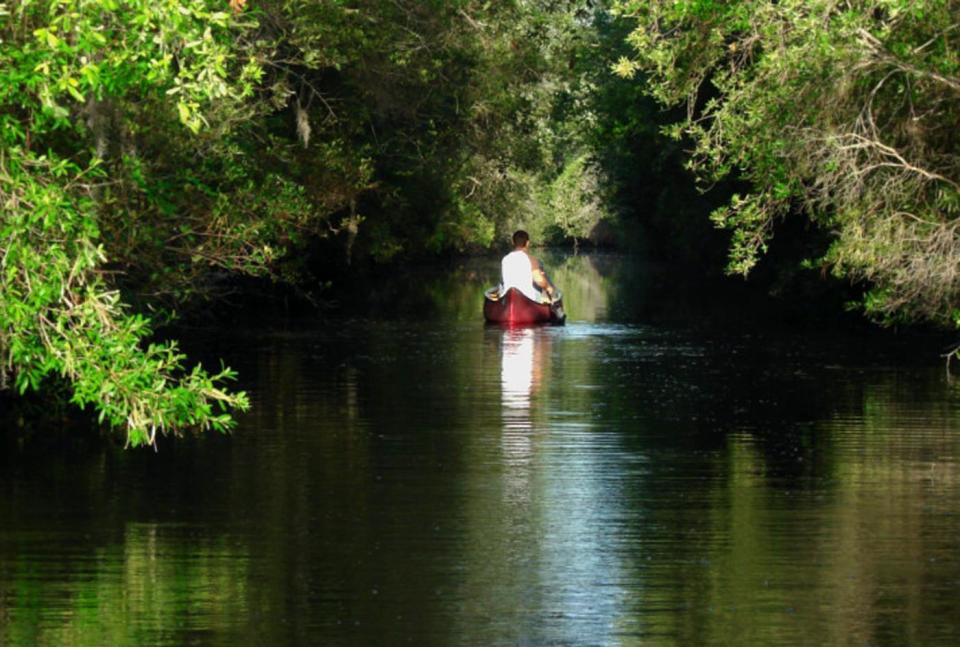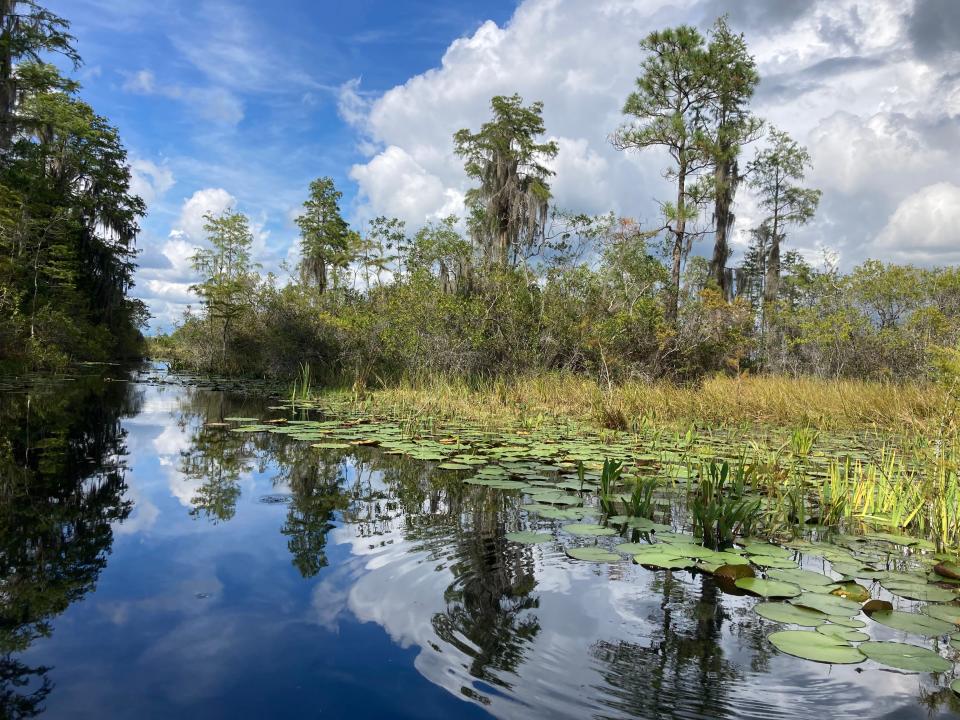New documentary shows Okefenokee National Wildlife Refuge as more than 'just a swamp'
No matter how odd, most families have at least one prized heirloom. Great-great grandma’s gravy boat sits safely in the cabinet until the holidays, and Great Uncle Sherm’s Rolex sits in a box, waiting for proms and weddings. Even the creepy wooden goose my family “adopted” from my grandparents has a special spot on the bookshelf.
We protect these things because they connect us to who we are — so why isn’t the Okefenokee swamp treated like a family heirloom?
I know what you’re thinking: “it’s just a swamp.” Okefenokee isn’t the bug-infested place you’re probably imagining. "Sacred Waters: The Okefenokee in Peril" makes it clear that Okefenokee is a place where you can witness alligators rising from the water like prehistoric creatures, watch birds glide over golden sunsets, and experience the Milky Way with the naked eye.
Recent updates:Okefenokee Protection Bill seeks second try at preventing mine at swamp
More:Army Corps blocks mine near Okefenokee, cites failure to consult Muscogee Creek Nation
Also:Okefenokee Swamp Park to seek UNESCO World Heritage Site Status for conservation, economy
Okefenokee is a gem that’s been passed down for generations, and titanium mining efforts may change it all if we don’t take the time to consider the ways the swamp connects us to who we are.

"Sacred Waters" producer Mark Albertin compared experiencing Okefenokee to processing a roll of film. In analog photography, or photography using film, the negatives are referred to as the first generation. Any prints are part of the second generation, and copies are the third and beyond. As you move away from the original, you lose the little details that make the experience unique and memorable.
“When you go into a place like the Okefenokee, you are seeing beyond that ‘negative’ stage. You are truly seeing things through the ‘first generation.’ You see it as it was intended,” Albertin said. “Your mind and soul are given a gift for all the senses, not just sight. There is no Photoshop or negative or any manmade influence on the view. For this reason, to me, it is sacred."
More:Environmental groups sue Army Corps of Engineers over Okefenokee swamp protections
Much like heirlooms, there’s a piece of history in that first-generation experience. While we may not be able to directly access the people and experiences connected to things like gravy boats, watches, or even photos, we can connect with the vibrant life within Okefenokee.
“I think what really needs to happen in our world today is that more people, especially young people, need to be able to experience it,” Albertin said. “We need to be able to go out in it, to play in it, to get in the mud and dirt to really understand it.”

Glimpses of our innate connection to nature are everywhere. You just have to take the time to look. During his visit, Albertin took a boat out to an unforested section of the swamp known as a prairie. As soon as Albertin and his guide began hearing peeper frogs croaking in the distance, the guide predicted that the noise would soon be upon them. Within moments, a deafening croaking flooded the area like humans doing the wave at football games as the frogs spread the news about two humans entering their home.
“It does something to you,” Albertin said. “It changes your view of things. It’s like, ‘wow, this is how the world was back before we were here.’”
While our presence in nature isn’t a bad thing, our impact has major long-term effects, especially when it comes to tampering with something as crucial to ecological functioning as Okefenokee.
More:Water wars on the Okefenokee heighten as EPD ends year with no permit decision
Albertin described Okefenokee as the kidneys of the earth, filtering contaminants from the water flowing from the Suwannee and St. Marys Rivers. Without this system, the water may become unsafe to drink. Mining will also lower water levels and increase fires, sending more harmful particles into the already-damaged atmosphere.
We’ll also see economic impacts due to lower water levels. Tourism is a major source of income for the Okefenokee National Wildlife Refuge, which supports over 750 jobs and brings in millions of dollars every year. By redirecting the water flow from the Suwannee and St. Marys Rivers, boats will be unable to access fishing and birding spots. Outside the refuge, hunters will have a harder time locating game as countless habitats are destroyed.
This is to say nothing of the cultural impacts. Without Okefenokee, people who have shaped their entire lives around the refuge will lose not only their homes but a part of themselves, the lives they’ve threaded harmoniously into the natural world.

At least we, as humans, can fight back. The same cannot be said for over 600 species of plants and 400 species of animals that call Okefenokee home.
“We're not going to hear anything from the wildlife,” Albertin said. “We're not going to see anything on social media from them. We're not going to hear them with lobbyists in Washington, D.C. trying to stop it.”
While it may not be your traditional family heirloom, Okefenokee is a gift from Mother Nature. It’s up to us protect it for future generations to experience those essential elements of who we are and how we exist in the world.
“This Earth is us,” Albertin said, “and we just can't let it go away.”
"Sacred Waters: The Okefenokee in Peril" is screening on Sunday at 4 p.m. at Tybee Post Theater, with a roundtable discussion directly afterward. Tickets are free. More information can be found at tybeeposttheater.org.
This article originally appeared on Savannah Morning News: Savannah GA movie times: Sacred Waters The Okefenokee in Peril

